This question is clumsily phrased: please ignore it and instead see the improved version here.
The graph of $$\frac{1}{1+z^2}$$ is:
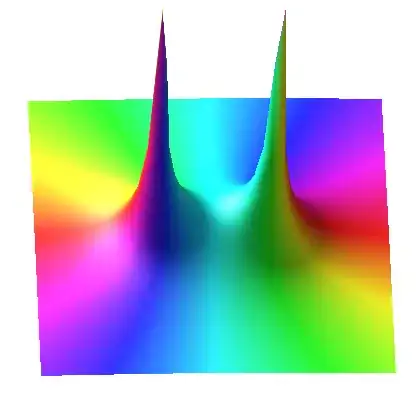
The graph of $$\frac{1}{1+x^2}$$ is:
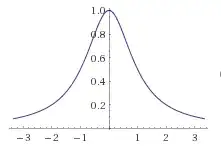
And the graph of $$\frac{1}{1-x^2}$$ Is:
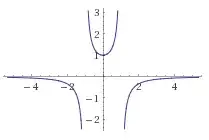
And the graph of $$\left|\frac{1}{1-x^2}\right|$$ Is:
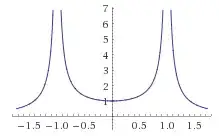
Notice how the graph of $\frac{1}{1+x^2}$ is equivalent to cutting the complex graph with a vertical plane directly between the two singularities (along the real axis). Notice also how cutting the complex graph with a vertical plane throug the two singualrites (perpendicular to the real axis) yeilds $|\frac{1}{1-x^2}|$. Obviously the complex plane and the cartesian plane bear some relation that it somewhat baffeling:
1.) Why must $\frac{1}{1-x^2}$ have it's absolute value taken before matching the complex function $\frac{1}{1+z^2}$?
2.) Graphing $\frac{1}{1-z^2}$ instead of $\frac{1}{1+z^2}$ rotates the singularities from $0,\pm i$ to $\pm 1, 0i$ or rotates the complex into the real and the real into the complex, but the same cartesian graphs apply. This suggests that what is on the real axis and what is on the imaginary axis is arbitrary because in one case the graph $\frac{1}{1+x^2}$ corresponds to the the vertical slice along the real axis and in the other case it corresponds to the vertical slice along the imaginary axis. The point of saying it is arbitrary is that $\frac{1}{1+x^2}$ is no more real or imaginary than $\frac{1}{1-x^2}$. Is that a valid conclusion?
3.) Is it possible to write a cartesian equation equivalent to a vertical plane through the complex plane $\frac{1}{1+z^2}$ for every possible angle and not just perpendicular or parallel to the real axis? If yes, how?
[edit]
AntonioVargas shared the following plot of $Re(1/(1+z^2))$ colored according to $Im(1/(1+z^2))$:
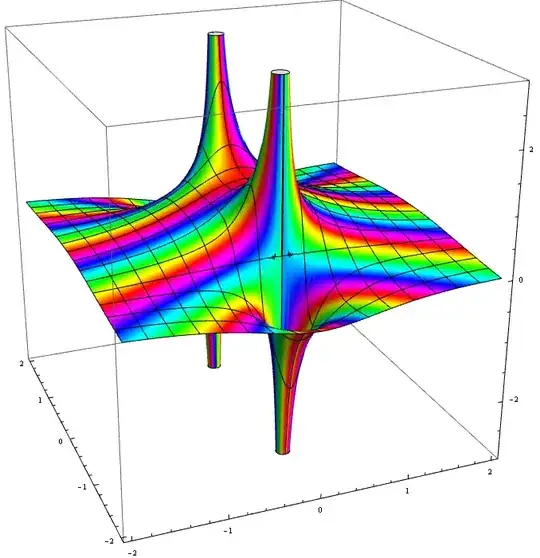
This plot explains why the Absolute value was necessary for the Cartesian function to represent the Complex function: The complex function had its absolute value taken as well. Questions 2 & 3 remain open.
[edit 2]
Thanks to pbs for finally explaining how to graph a complex function! I was able to graph the Re(1/(1+z^2) on Wolfram Alpha!

However the 3D plot of the imaginary component begs more questions than it answers:
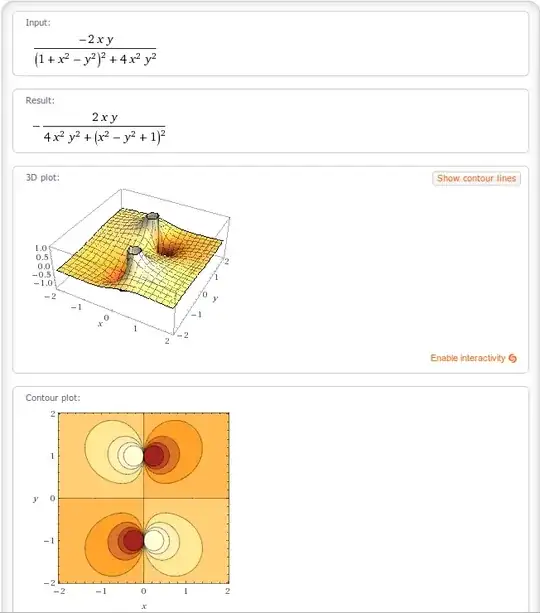
It would be so much simpler to explain with out the Imaginary plot! What's going on here? The absolute value seems to have been taken without having been stated. Hmmmm... Back to question 1 as unanswered! (except this time only for $Im(1/(1+z))$.